Abstract
A prospective controlled trial involving over 1000 patients did not reveal any difference between four drugs commonly used in accident and emergency departments for the relief of mild to moderate pain. There were no significant variations in therapeutic effect, side-effects or patient compliance. When considering the supply of analgesics which may be no more potent than those available without prescription from retail chemists, cost and safety are more important than analgesic effect. By restricting the choice of analgesics available, the accident and emergency department should be able to increase awareness among its staff of the actions and side-effects of a small number of prescribed drugs and to contain costs.
Full text
PDF
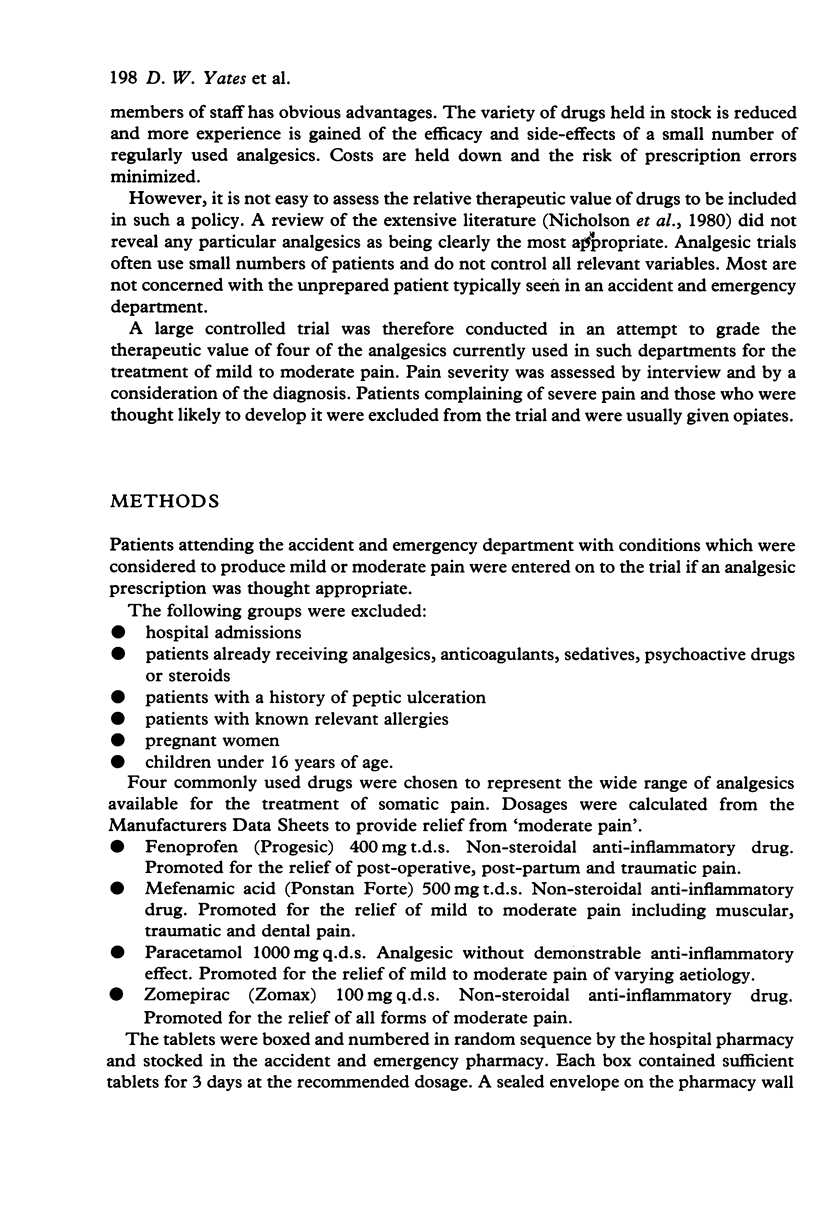
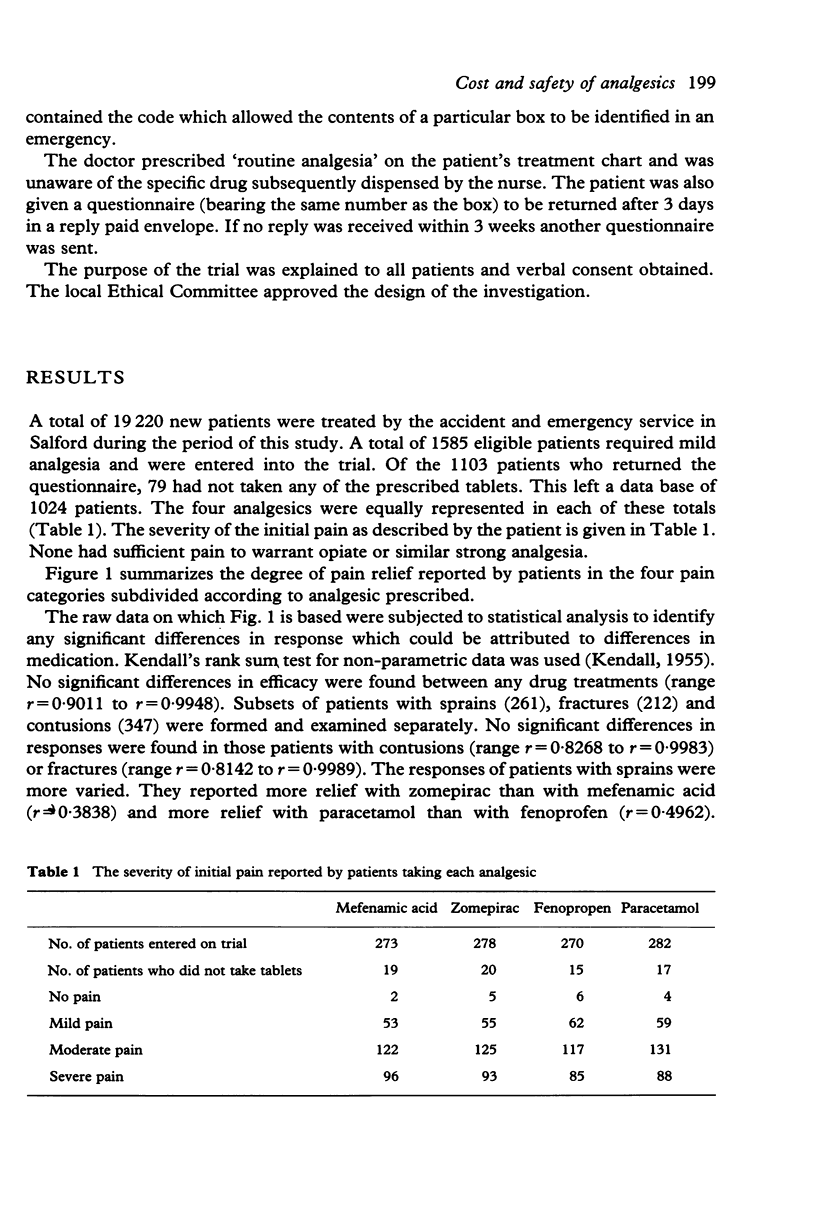
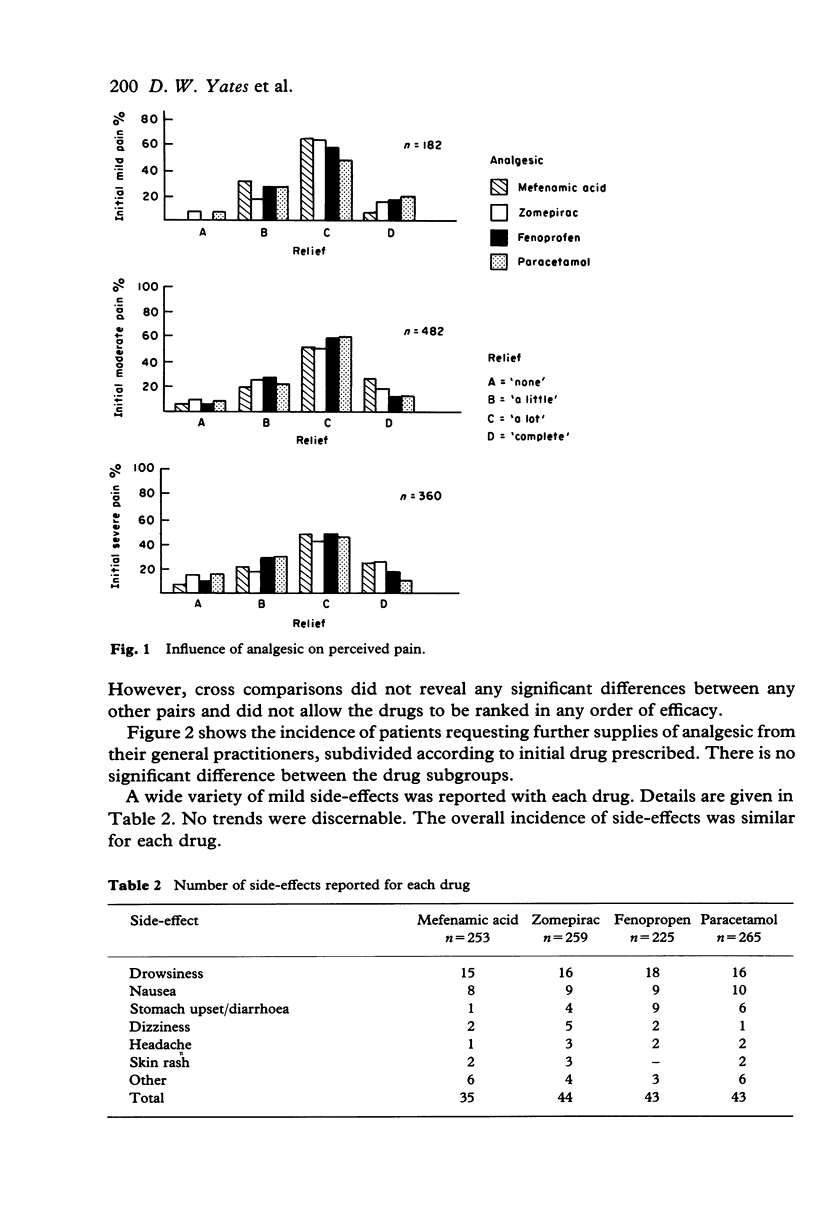

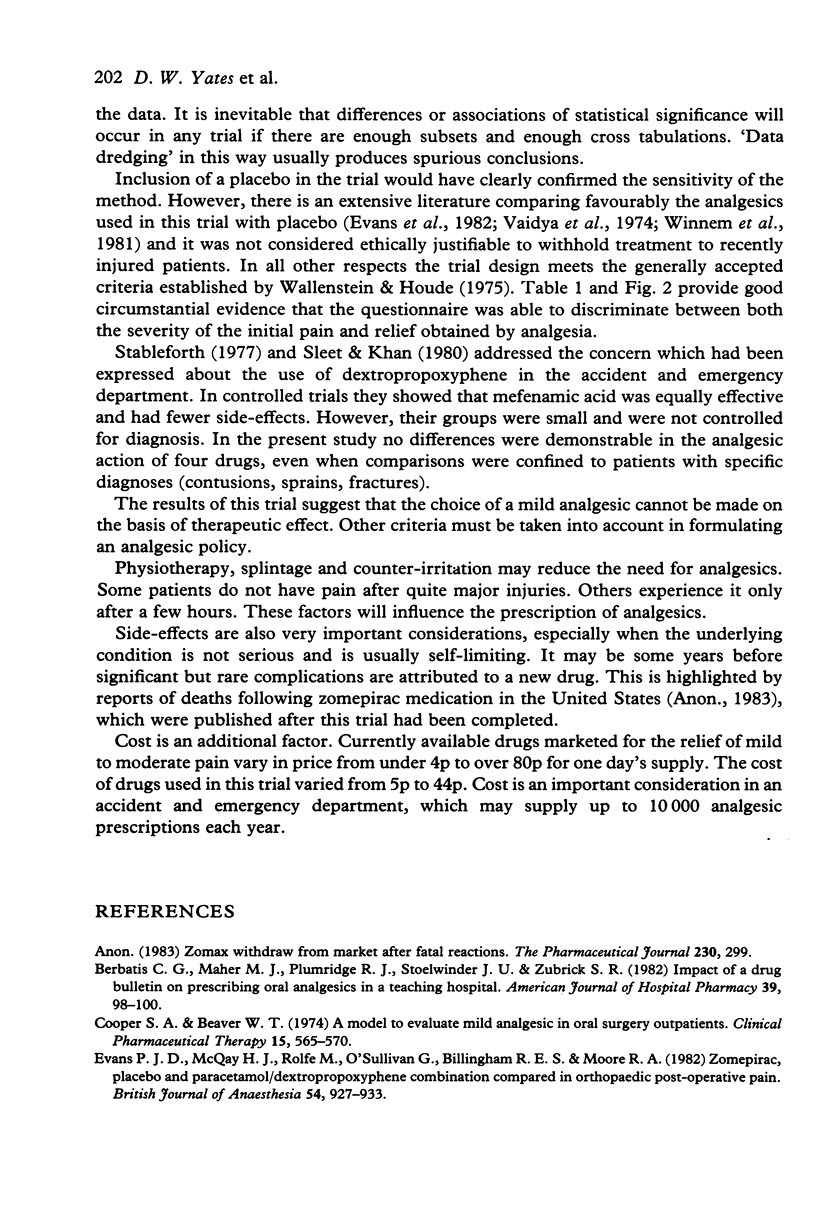
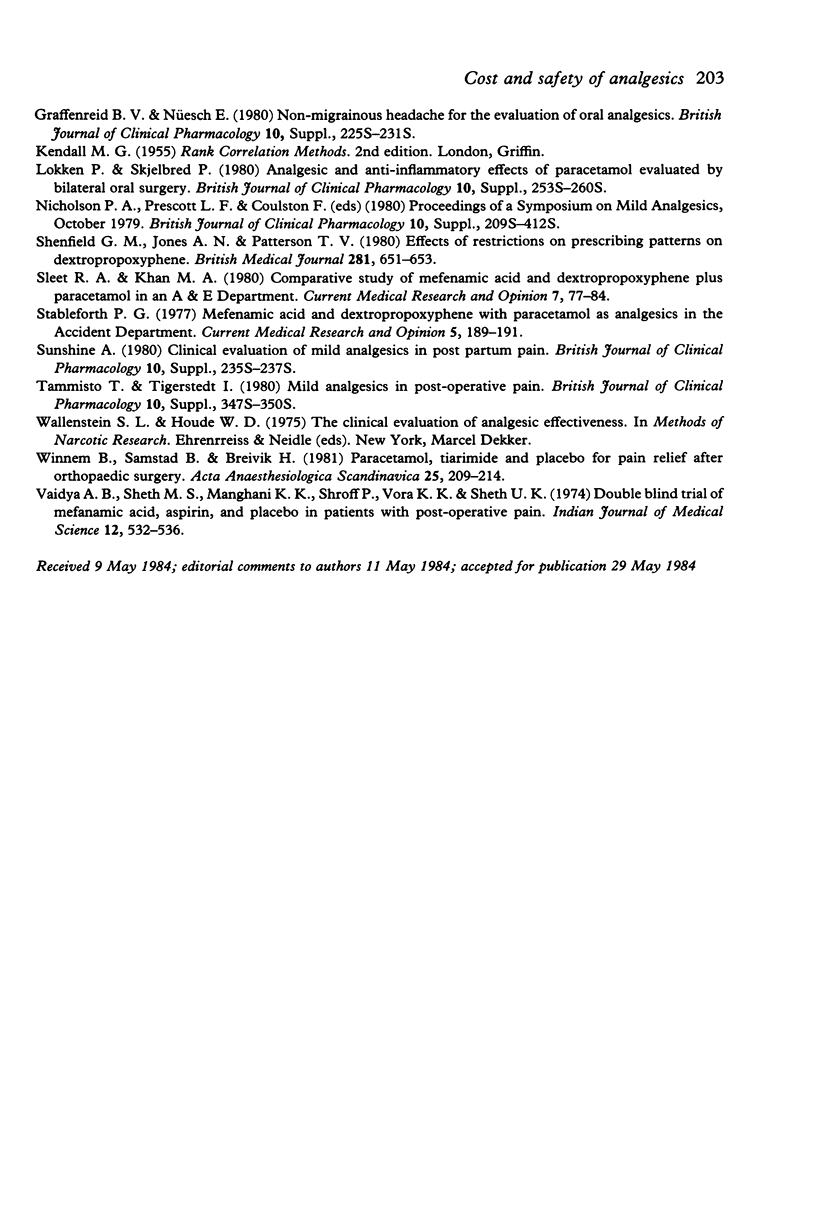
Selected References
These references are in PubMed. This may not be the complete list of references from this article.
- Berbatis C. G., Maher M. J., Plumridge R. J., Stoelwinder J. U., Zubrick S. R. Impact of a drug bulletin on prescribing oral analgesics in a teaching hospital. Am J Hosp Pharm. 1982 Jan;39(1):98–100. [PubMed] [Google Scholar]
- Evans P. J., McQuay H. J., Rolfe M., O'Sullivan G., Bullingham R. E., Moore R. A. Zomepirac, placebo and paracetamol/dextropropoxyphene combination compared in orthopaedic postoperative pain. Br J Anaesth. 1982 Sep;54(9):927–933. doi: 10.1093/bja/54.9.927. [DOI] [PubMed] [Google Scholar]
- Johnstone E. C., Ferrier I. N. Neuroendocrine markers of CNS drug effects. Br J Clin Pharmacol. 1980 Jul;10(1):5–21. doi: 10.1111/j.1365-2125.1980.tb00497.x. [DOI] [PMC free article] [PubMed] [Google Scholar]
- Johnstone E. C., Ferrier I. N. Neuroendocrine markers of CNS drug effects. Br J Clin Pharmacol. 1980 Jul;10(1):5–21. doi: 10.1111/j.1365-2125.1980.tb00497.x. [DOI] [PMC free article] [PubMed] [Google Scholar]
- Johnstone E. C., Ferrier I. N. Neuroendocrine markers of CNS drug effects. Br J Clin Pharmacol. 1980 Jul;10(1):5–21. doi: 10.1111/j.1365-2125.1980.tb00497.x. [DOI] [PMC free article] [PubMed] [Google Scholar]
- Johnstone E. C., Ferrier I. N. Neuroendocrine markers of CNS drug effects. Br J Clin Pharmacol. 1980 Jul;10(1):5–21. doi: 10.1111/j.1365-2125.1980.tb00497.x. [DOI] [PMC free article] [PubMed] [Google Scholar]
- Shenfield G. M., Jones A. N., Paterson J. W. Effect of restrictions on prescribing patterns for dextropropoxyphene. Br Med J. 1980 Sep 6;281(6241):651–653. doi: 10.1136/bmj.281.6241.651. [DOI] [PMC free article] [PubMed] [Google Scholar]
- Sleet R. A., Khan M. A. Comparative study of mefenamic acid and dextropropoxyphene plus paracetamol in an accident and emergency department. Curr Med Res Opin. 1980;7(2):77–84. doi: 10.1185/03007998009112030. [DOI] [PubMed] [Google Scholar]
- Stableforth P. G. Mefenamic acid and dextropropoxyphene with paracetamol as analgesics in the accident department. Curr Med Res Opin. 1977;5(2):189–191. doi: 10.1185/03007997709110163. [DOI] [PubMed] [Google Scholar]
- Vaidya A. B., Sheth M. S., Manghani K. K., Shroff P., Vora K. K., Sheth U. K. Double blind trial of mefenamic acid, aspirin and placebo in patients with post-operative pain. Indian J Med Sci. 1974 Dec;28(12):532–536. [PubMed] [Google Scholar]
- Winnem B., Samstad B., Breivik H. Paracetamol, tiaramide and placebo for pain relief after orthopedic surgery. Acta Anaesthesiol Scand. 1981 Jun;25(3):209–214. doi: 10.1111/j.1399-6576.1981.tb01638.x. [DOI] [PubMed] [Google Scholar]


